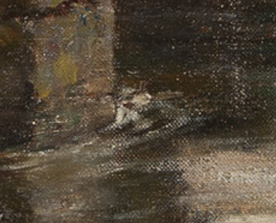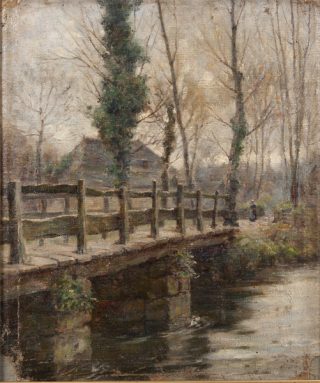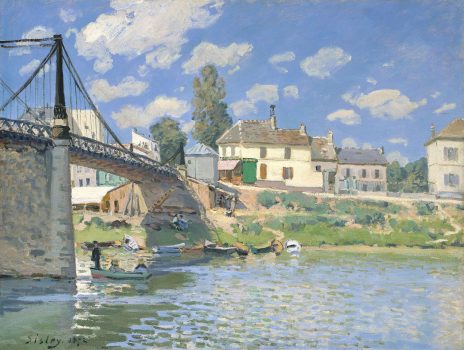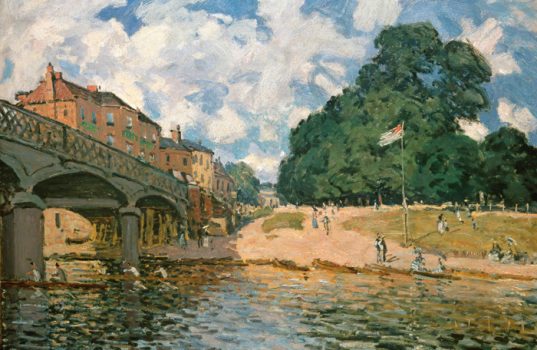‘The Footbridge’ Painting

The enchanting woodland scene captures in time, the likely figure of Eugenie Lescouezec approaching the monogram fused into the slow-flowing water.
The sequencing features in 'The Lesson’ monogram c1874 possibly relate to the loss of 'The Footbridge’ painting and the earlier monogram c1867.
(see pages on the Sequencing Motif)
The discovery of 'The Footbridge’ painting confirms how far Sisley had developed as an artist in the late 1860’s period of collaboration and experimentation in the forest of Fontainebleau.
The emergence of the Impressionist Palette is established in the work.
The importance of 'The Footbridge’ c1867 in the artist’s ouevre is confirmed by Sisley returning to the compositional motifs and Woodland Scene Palette in later works.
COMPOSITIONAL MOTIFS (landscape features)
Key motifs are the figure placed close to a prominent tree which extends out of the canvas and on a pathway which leads into the distance.
(see comparison pages: Herbst in Louveciennes, Snow Scene,Moret Station)
The immediacy of the expanse of water is returned to again and again in later works.
Edge of a woods with buildings behind a screen of trees and the silvery tones of the sky are Corot influences.
Archway Motif
The discovery of this key motif highlights an innovative talent in landscape composition itself and links the early work to 'Sous Bois’ 1886.
(see comparison pages: Archway Motif, Nuance of Brushstroke 'Sous Bois’)
Bridge Motif
The major motif is the footbridge, with it’s oblique angle cutting across the side of the canvas. Leading the viewer to the approaching female figure and seamlessly joined to the archway motif in the composition.
The oblique angle is replicated in village scenes using fences, walling and lanes
(see page: Comparison Garden Path in Louveciennes)
Comparison
IMPRESSIONIST PALETTE and WOODLAND SCENE PALETTE
The vibrancy of the figure approaching the bridge is captured by the bright colors (and handling of paint) of the Impressionist Palette. Possibly, the earliest example of this color palette in French Impressionism.
The darker colors of the Woodland Scene Palette are an artistic preference in the depiction of woodland scenes.
Evidentually, in only a matter of months after completing 'Herbst in Louveciennes’ Sisley completed 'Bridge at Hampton Court’ .
(see page: Comparison Herbst in Louveciennes)




